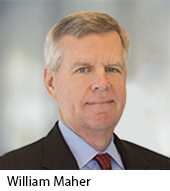
‘Moderate’ Economic, CRE Growth Forecast Through 2019
The U.S. economy and commercial real estate should both experience “moderate” growth through 2019, said the Urban Land Institute, Washington. D.C.
The semi-annual ULI Real Estate Consensus Forecast surveyed 48 analysts representing 34 real estate investment, advisory and research firms. The consensus: U.S. GDP should grow 2.2 percent in 2017 and 2.4 percent in 2018–both down slightly from the last survey six months ago. Forecasts for both years are close to the 20-year average of 2.35 percent, with growth moderating to 2.0 percent in 2019.
Net job growth should average 1.76 million per year through 2019 compared to a 1.2 million long-term average, the economists predicted. Compared to the last economic forecast six months ago, job growth will likely be lower for 2017, 2018 and 2019. Job growth should reach 2 million in 2017 before falling to 1.5 million in 2019, possibly due to concerns about labor availability, ULI said.
The analysts’ expected yields on 10-year Treasury notes fell compared to six months ago. The forecast for year-end yield is 2.4 percent for 2017, 2.7 percent for 2018 and 3 percent for 2019, all well below the 3.8 percent 20-year average.
The forecast called for “relatively high but moderating” commercial real estate volumes, continued CRE price appreciation at a decelerating rate, rent growth and positive returns at lower levels going forward.
 William Maher, Director of North American Strategy and Research with LaSalle Investment Management, Chicago, said survey respondents downplayed the possibility of a spike in economic growth through 2019. “At the same time, they confirmed that the current expansion could become the longest one since records were kept starting in the 19th century,” he said.
William Maher, Director of North American Strategy and Research with LaSalle Investment Management, Chicago, said survey respondents downplayed the possibility of a spike in economic growth through 2019. “At the same time, they confirmed that the current expansion could become the longest one since records were kept starting in the 19th century,” he said.
Commercial real estate prices as measured by Real Capital Analytics’ Commercial Property Price Index will likely rise by 4 percent per year on average over the next three years (5 percent, 4.1 percent and 3 percent, respectively), compared to the 5.6 percent long-term average increase.
Over the next three years, national CRE vacancy or availability rates should rise “modestly” for all property types except industrial, which will stay flat, the analysts predicted. Apartment vacancies are expected to increase from 4.8 percent to 5.1 percent in 2019, down from a 5.4 percent expectation six months ago. Industrial availability will likely be 7.9 percent in 2019, no change from 2016 and well below the 10.2 percent long-term average. The office vacancy rate is forecast to increase steadily over the next three years until it ends 2019 at 13.4 percent, ULI said. Retail availability could reach 10.3 percent in 2019.
Maher noted U.S. commercial property markets are close to equilibrium, “which should result in inflationary rent growth and returns in the single digits for core real estate and equity real estate investment trusts.”
